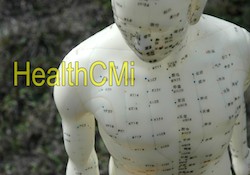A new meta-analysis finds evidence that acupuncture is effective in controlling cancer related symptoms.  Studies support the use of acupuncture for the treatment of cancer related pain, nausea, fatigue, hot flashes, insomnia, vomiting, anxiety, depression and dry mouth. Based on these findings, the researchers suggest expanding studies into the beneficial clinical effects of acupuncture for cancer patients. Further, the researchers note that acupuncture used in the field of oncology requires a “constant dialog” between acupuncturists and other treating physicians for improved clinical outcomes.
Studies support the use of acupuncture for the treatment of cancer related pain, nausea, fatigue, hot flashes, insomnia, vomiting, anxiety, depression and dry mouth. Based on these findings, the researchers suggest expanding studies into the beneficial clinical effects of acupuncture for cancer patients. Further, the researchers note that acupuncture used in the field of oncology requires a “constant dialog” between acupuncturists and other treating physicians for improved clinical outcomes.
The researchers note that acupuncture promotes several biological changes. Acupuncture activates neural, endocrine and immunological regulation. Citing modern evidence that acupuncture regulates the parasympathetic and sympathetic nervous systems, the researchers suggest that this may be a biomedical correlate for the ancient Chinese theory that acupuncture balances yin and yang. They added that electro-acupuncture induces “serotonin release from the upper brain stem region and hypothalamus and stimulates endogenous opiate release (b‑endorphin, enkephalin, endomorphin, and dynorphin) which then alleviates cancer pain.” The research team also notes that acupuncture regulates the immune system in part by stimulating leukocytes, both granulocytes and lymphocytes. This is accomplished by acupuncture’s ability to stimulate the hypothalamus-pituitary-adrenal axis. Additional research presented demonstrated that acupuncture benefits both T-lymphocyte and Natural Killer cell (NK cell) function.
The analysis found significant positive clinical outcomes. A comparison study of sham acupuncture and true acupuncture demonstrated that only true acupuncture was effective in reducing hot flashes in breast cancer patients. Xerostomia, dry mouth, due to radiation therapy is of major concern. The research shows that acupuncture improves salivary flow rates and decreased overall xerostomia including reductions of related pain and dysfunction. Chemotherapy induced nausea and vomiting is also of major concern. The findings demonstrate that acupuncture reduces both nausea and vomiting for chemotherapy patients.
Many cancer patients take analgesics to reduce pain but continue to experience severe discomfort. The researchers identified a 90 patient randomized controlled study wherein cancer patients taking analgesics experienced significant additional pain reduction with the addition of acupuncture to their regime of care. Additionally, patients taking aromatase inhibitors for the treatment of cancer experience joint pain and stiffness. This class of drugs is often used for the treatment of breast and ovarian cancer. The researchers found randomly controlled trials demonstrating that body style acupuncture and auricular acupuncture are both effective in reducing pain associated with the use of this class of cancer medication
A comparison study of sham acupuncture with true acupuncture for the treatment of chemotherapy related fatigue concluded that only true acupuncture reduced overall fatigue and improved motivation. This was confirmed by a phase 2 single-arm study wherein acupuncture demonstrated the same results. Another randomly controlled trial of 80 cancer patients demonstrated that acupuncture reduces depression and improves overall sleep quality.
Improvements in immunohistochemistry, CT technology and MRI imaging have led to improved studies on the effective mechanisms of acupuncture. This, combined with improvements in controlled clinical trials, has yielded important results demonstrating the ability of acupuncture to relieve suffering. This recent meta-analysis reflects this enormous leap forward of acupuncture research on the relief of suffering associated with cancer. The next step will be to continue the acupuncture continuing education and research while expanding integrative medicine implementation for the benefit of patients.
Reference:
Chien, T. J., C. Y. Liu, and C. H. Hsu. "Integrating acupuncture into cancer care." Journal of Traditional and Complementary Medicine 3, no. 4 (2013): 234.

